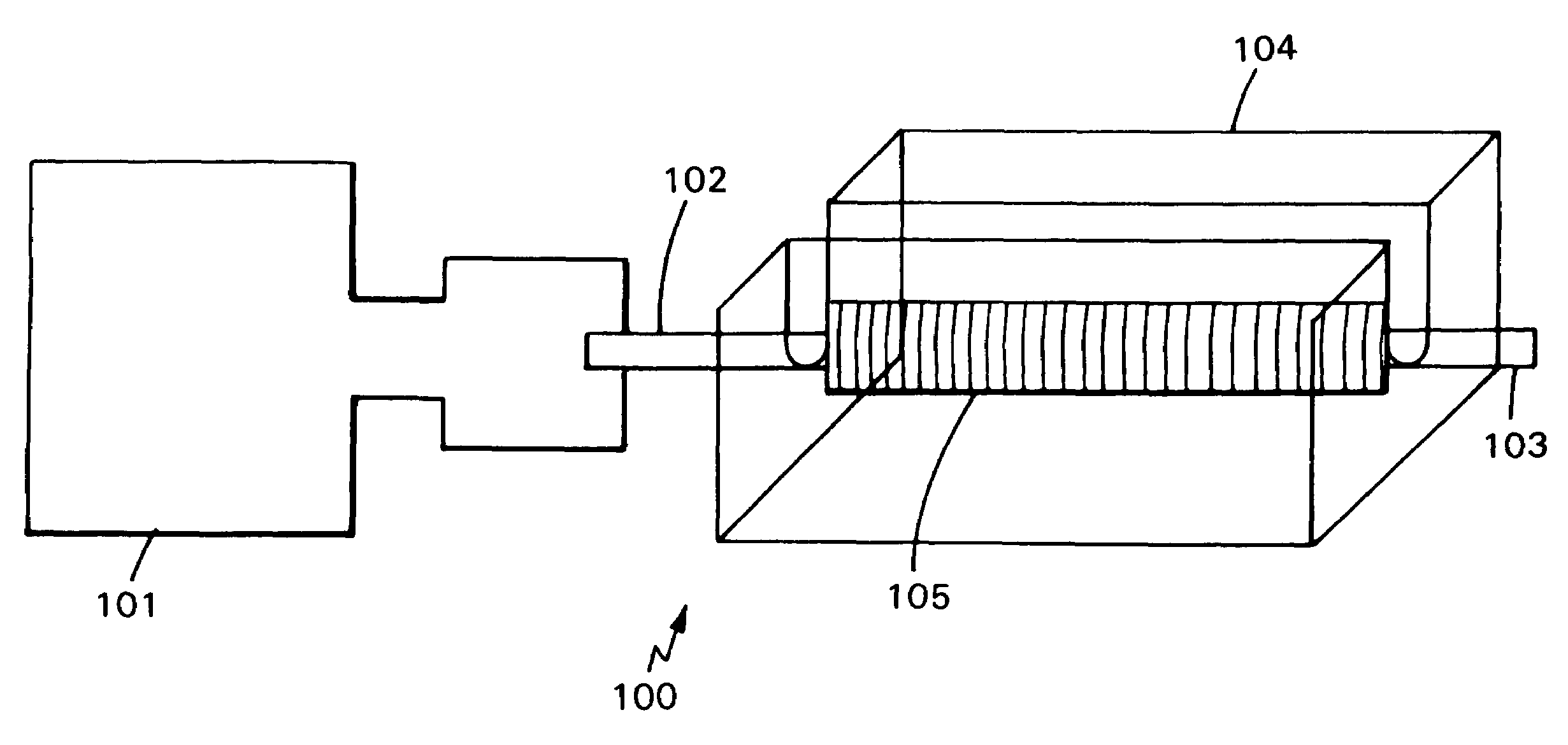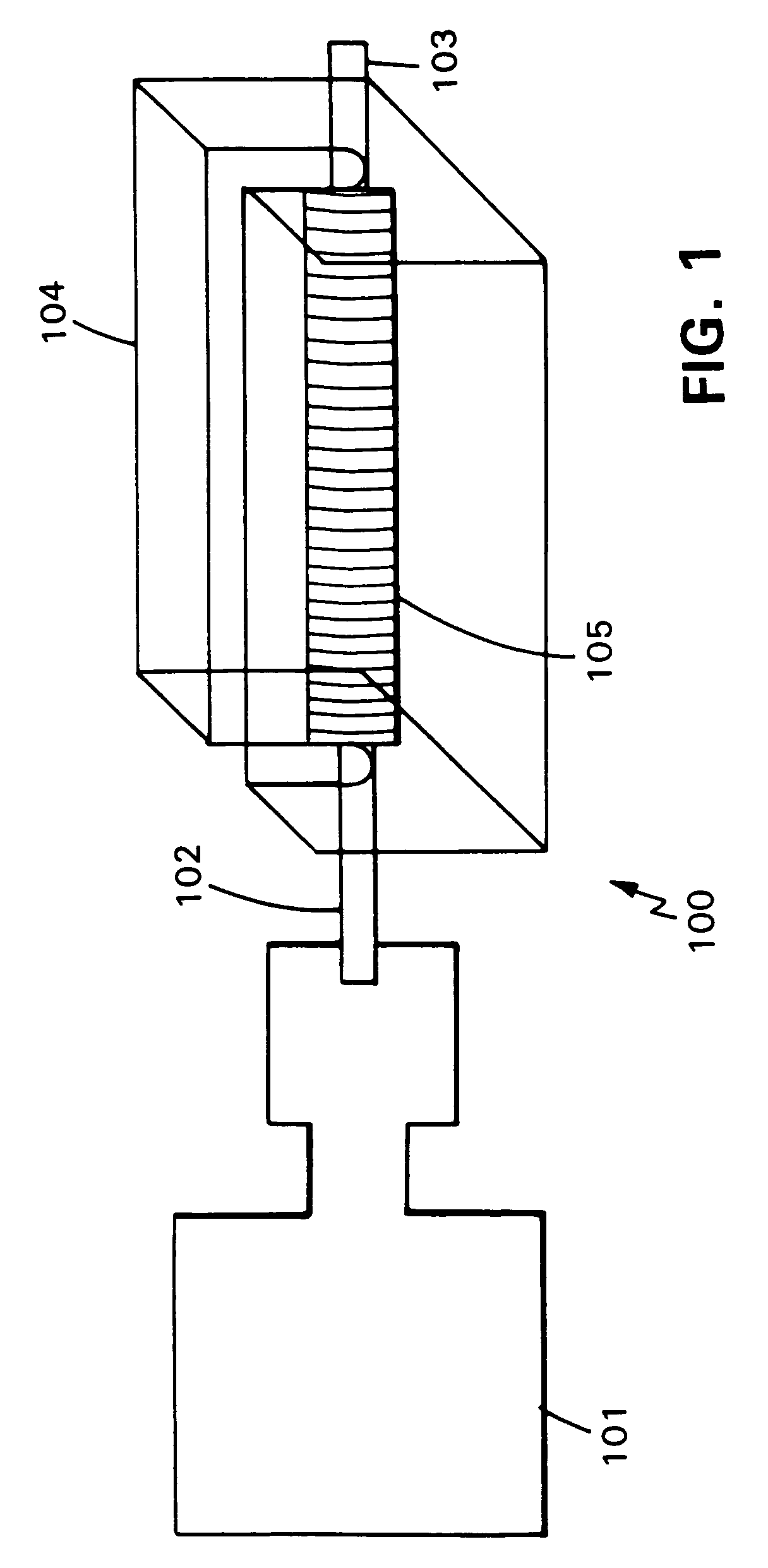Oriented biopolymeric membrane for meningeal tissue repair
a biopolymer membrane and meningeal tissue technology, applied in the direction of prosthesis, biocide, bandages, etc., can solve the problem that the mechanical strength of membranes is generally low, and achieve the effect of convenient measuremen
- Summary
- Abstract
- Description
- Claims
- Application Information
AI Technical Summary
Benefits of technology
Problems solved by technology
Method used
Image
Examples
Embodiment Construction
[0010]The membranes of the present invention for meningeal tissue repair contain at least one layer of biopolymeric fibers oriented in one direction, and therefore possess greater mechanical strength and tear resistance. The improved properties allow such membranes to be sutured into place at the meningeal repair site.
[0011]Such membranes can be produced by dispersing biopolymeric fibers in an aqueous solution; reconstituting the dispersed fibers in one layer; and orienting the reconstituted fibers. The membranes may include selected bioactive agents such as growth factors, anti-adhesive molecules, drugs, and the like.
[0012]Below are examples of how different membranes of this invention can be prepared.
[0013]A method of fabricating a reconstituted single-layer membrane of the present invention includes the following steps:[0014]a) forming an aqueous dispersion containing biopolymeric fibers;[0015]b) reconstituting the fibers;[0016]c) orienting the reconstituted fibers on a rotating ...
PUM
| Property | Measurement | Unit |
|---|---|---|
| Temperature | aaaaa | aaaaa |
| Temperature | aaaaa | aaaaa |
| Weight | aaaaa | aaaaa |
Abstract
Description
Claims
Application Information
 Login to View More
Login to View More - R&D
- Intellectual Property
- Life Sciences
- Materials
- Tech Scout
- Unparalleled Data Quality
- Higher Quality Content
- 60% Fewer Hallucinations
Browse by: Latest US Patents, China's latest patents, Technical Efficacy Thesaurus, Application Domain, Technology Topic, Popular Technical Reports.
© 2025 PatSnap. All rights reserved.Legal|Privacy policy|Modern Slavery Act Transparency Statement|Sitemap|About US| Contact US: help@patsnap.com


